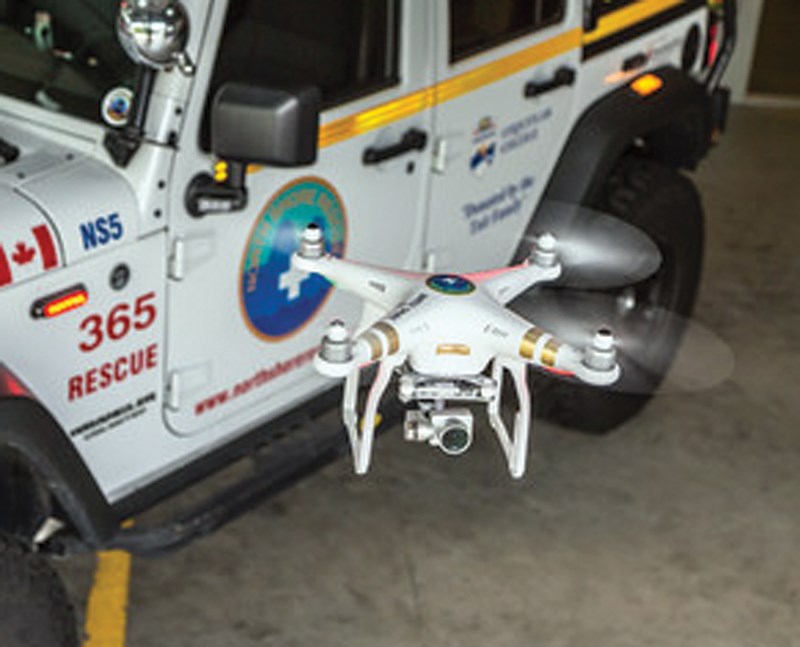North Shore Rescue has a new team member.
The volunteer rescue squad added their first drone, Delta 1, to their collection of long-lines, crampons and other life-saving tools last weekend.
While the first operational flight could be months off, the team is anxious to get the drone in the air, according to NSR’s Curtis Jones.
“We’re going to start using it for looking over edges or for searching an isolated boulder field,” he said.
During previous searches, NSR team members removed the door from a helicopter so they could survey snow-covered boulders through binoculars. The new drone, a DJI Phantom 3, could be piloted around treacherous terrain and search in a grid pattern, Jones explained.
Measuring about 30 centimetres from end to end and weighing a little more than one kilogram, the drone provides a live feed in 4K, the equivalent of high-definition television. The built-in camera also allows rescue volunteers to scan footage frame by frame without any blurring, Jones noted. While they’re happy to have it, Jones acknowledged the new tool is “a bit of a fair weather drone.”
While it can handle heat, the drone can’t fly when it’s colder than zero Celsius. “It can handle significant wind, but it can’t handle moisture,” Jones noted.
The drone can transmit from as far away as five kilometres, although it won’t likely fly that far from the pilot, Jones said. “We’re constrained in that legally we have to maintain line of sight at all times.”
Operators are also required to keep their drones no more than 90 metres above the ground.
While NSR might require permission from Transport Canada to conduct searches on the front side of the North Shore mountains, Jones said they’d likely be able to fly the drone on the back side of the mountains without applying for a certificate.
Just a few years ago, the drone would have cost close to $10,000. NSR picked up the Phantom for slightly less than $2,000, Jones said.
Jones already has plans for a second, bigger drone equipped with an infrared sensor that could detect lost hikers by body temperature.
“We’re moving forward in baby steps,” he said.
Transport Canada is expected to update their rules around drones in 2017.



